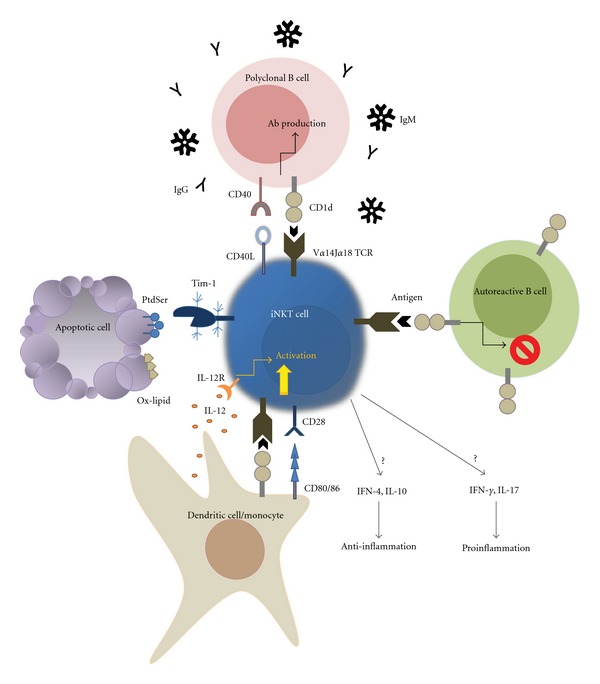Figure 1.

The function of iNKT cells in murine lupus models. iNKT cells in the mouse that express invariant TCR, Vα14Jα18, are CD1d-restricted T lymphocytes. The antigens presented by CD1d can be microbial components, endogenous antigen, iGb3, or oxidized lipid (Ox-lipid) derivatives from apoptotic cells. DCs and monocytes are potent APCs that activate iNKT cells both directly through TCR engagement and indirectly through IL-12. Immediately upon activation, iNKT cells release Th1-, Th2-, and T17-related cytokines, depending on the antigen presented and/or the characteristics of the APCs. The proinflammatory cytokines, IFN-γ and IL-17, lead predominantly to SLE exacerbation. iNKT cells can sense apoptotic blebs through Tim-1, which recognizes phosphatidylserine (PtdSer) exposed on the outer leaflet membrane, and can mediate immune suppression (see text). By contrast, iNKT cells activate B cells and thus upregulate total IgG and IgM levels in a CD1d-dependent manner, but iNKT cells can also inhibit the activation of autoreactive B cells. CD1d expression levels suggest that iNKT cells are capable of discriminating self- from nonself-reactive B cells.
